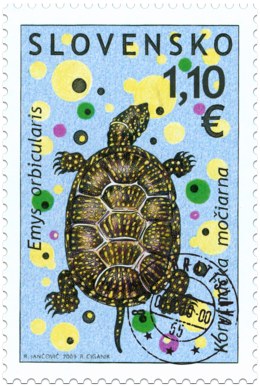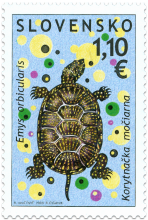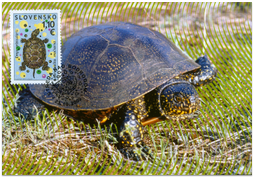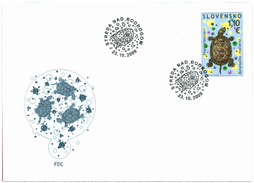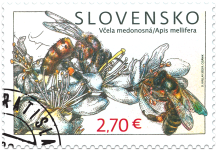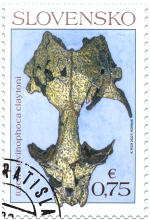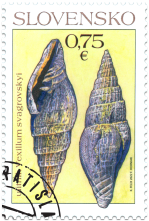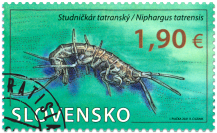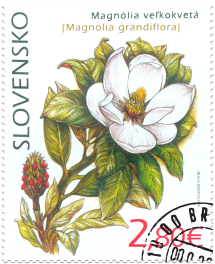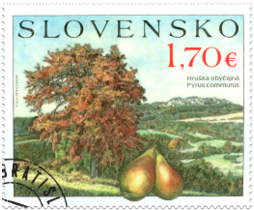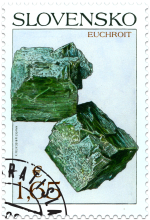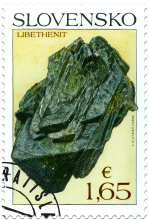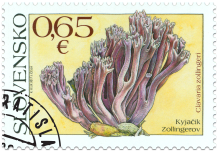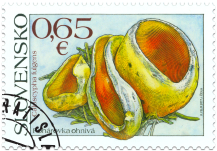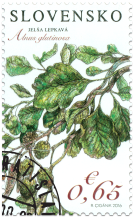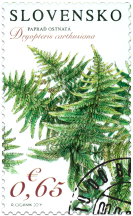461 Date of issue
23.10.2009 Face value
1.10 € Sell price
0.55 €
The European Pond Turtle is the only original representative of turtles in Slovakia. Like other water turtle species, it has a slightly curved shell. The upper part of the shell (the carapace) is up to 30 centimetres long, and is brown-black with many small whitish or yellow spots. The lower shell (the plastron) is yellow-white to light-brown and has variably dark (usually black) markings. The turtle’s skin on its limbs, tail, neck and the greater part of head is covered by scutes. It has five digits on the front feet, and four digits fused into paddles for swimming with sharp claws on its back feet. European Pond Turtles usually occur in still water or muddy and overgrown streams in lower altitudes. Their activity begins at the end of March, depending on the climate. During the day they search for food, hide by water areas, and sun themselves on shores or on top of objects floating in water. The turtles can remain submerged for long periods due to their strong breathing apparatus which consists of anal gland and oral cavity mucosa that can absorb oxygen from the water. Turtles usually mate in the water in the early spring, then in late spring or early summer the females lay eggs around ponds into shallow dug holes. In warmer areas the young hatch in autumn. In Slovakia they usually hatch the following year in spring. The young mature at the age of 15 years and live for about 70 years or more. European Pond Turtles are mostly carnivorous, usually feeding on insects, fish, crustaceans, earthworms, and amphibians, sometimes also dead animals, and their diet also includes vegetation. They usually hibernate buried at the bottom of water biotopes from the end of October. European Pond Turtles are found in Southern and Central Europe, Western Asia, and North Western Africa. Their occurrence in the north extends as far as the Baltics. In Slovakia they only occur within a few isolated areas of the Eastern and Western lowlands. Throughout Europe, the European Pond Turtle is a strictly protected species. In Slovakia, it is a critically endangered animal which is subject to the highest degree of protection. Ján Kautman
Show less© 2024 POFIS - Postal philatelic service. All rights reserved

